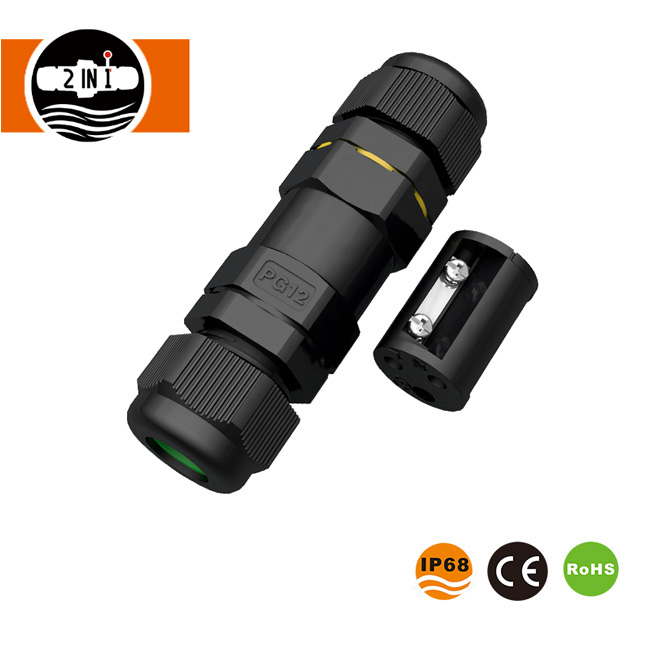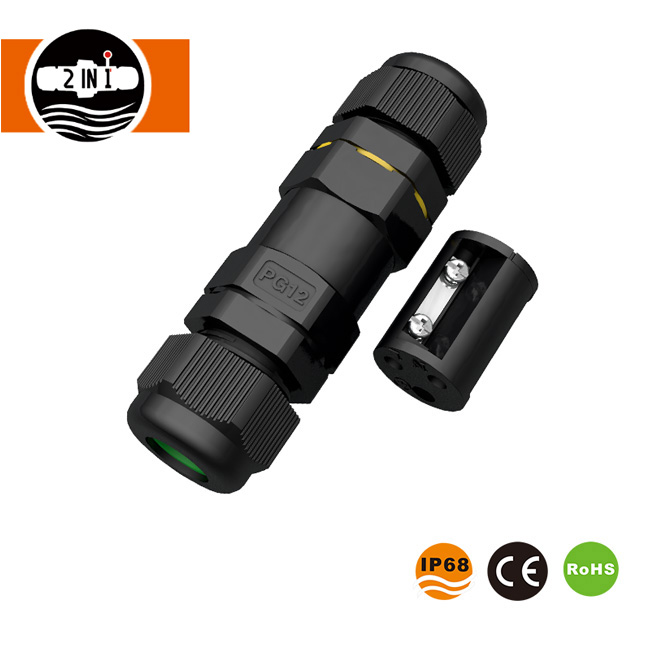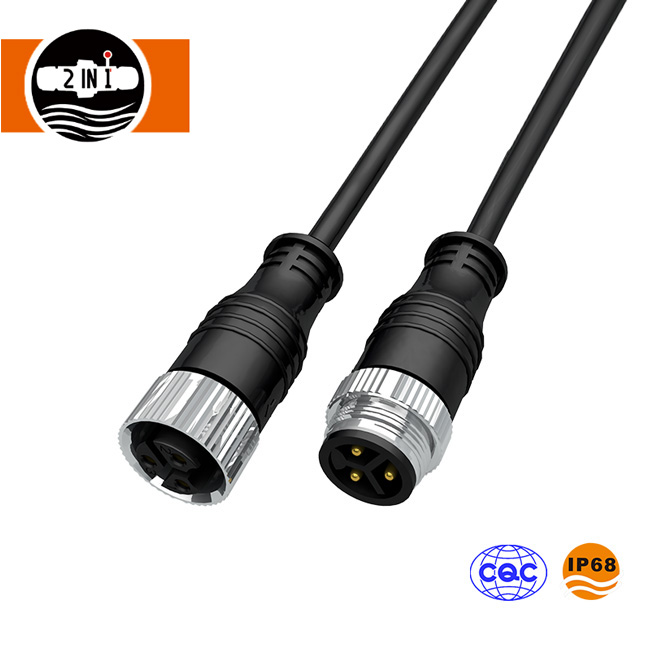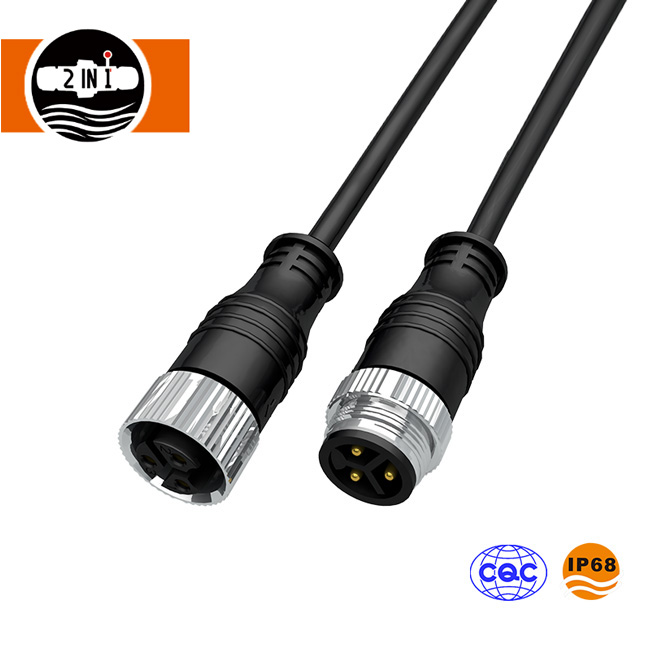In the intricate network of electrical systems, connectors serve as the critical links that ensure power flows safely and reliably. Among the various types of connectors available, those certified by Underwriters Laboratories (UL) stand out as the gold standard for safety, performance, and compliance. Whether in residential wiring, industrial machinery, or commercial buildings, UL connectors play a pivotal role in preventing electrical hazards, reducing downtime, and ensuring long-term system integrity. As industries become more stringent about safety regulations and consumers prioritize reliability, understanding why UL connectors are indispensable has never been more important. This guide explores the significance of UL certification, the key features of high-quality UL connectors, detailed specifications of our premium products, and answers to common questions to help professionals and buyers make informed decisions.
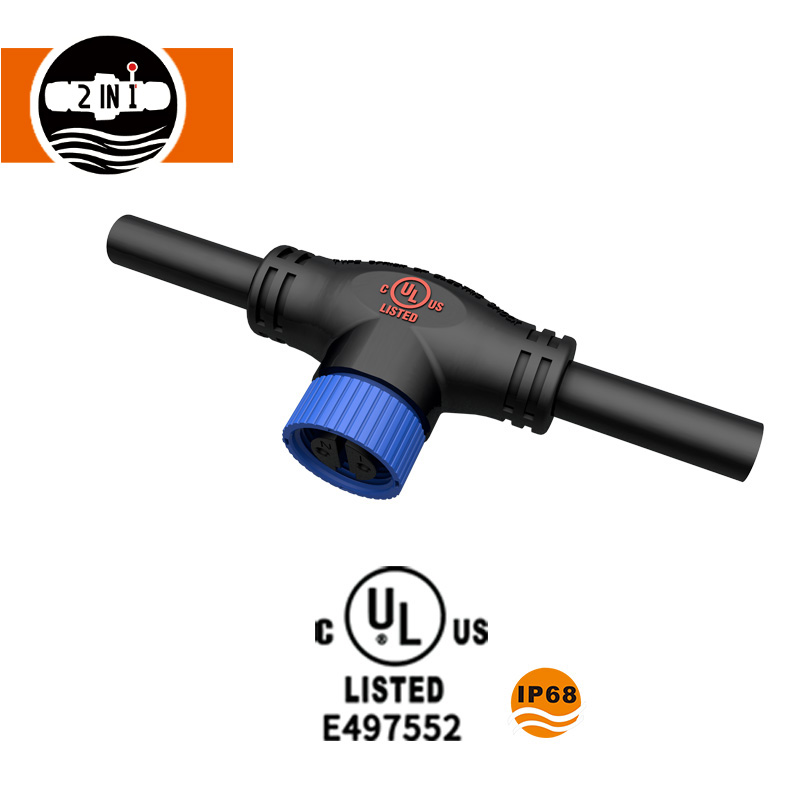
Trending News Headlines: Top Searches on UL Connectors
These headlines highlight the core concerns of users: staying updated on standards, mitigating risks, and selecting the right product for specific applications. As electrical systems grow more complex and regulations evolve, the demand for reliable, UL-certified connectors continues to rise, making it essential to understand their role in ensuring safe and efficient operations.
Why UL Connectors Are Critical for Electrical Safety and Compliance
UL certification is more than just a label—it is a rigorous validation of a connector’s ability to meet strict safety and performance standards. Here’s why
UL connectors are non-negotiable for any electrical system:
Compliance with Global Safety Standards
Underwriters Laboratories (UL) is a globally recognized independent safety science company that tests and certifies products to ensure they meet rigorous safety criteria. UL-listed connectors undergo extensive testing, including evaluations for electrical conductivity, temperature resistance, flame retardancy, and mechanical durability. This certification ensures that the connectors comply with international standards such as UL 486A-B (for wire connectors) and UL 1977 (for industrial control connectors), as well as local codes and regulations in regions like North America, Europe, and Asia. For professionals, using UL connectors simplifies compliance with building codes and industry standards, reducing the risk of fines, project delays, or liability issues in the event of an accident.
Prevention of Electrical Hazards
Electrical hazards such as short circuits, overheating, and fires are often caused by substandard connectors that fail under stress. UL connectors are designed to withstand extreme conditions, including high voltages, fluctuating currents, and temperature variations. For example, UL-listed connectors are tested to resist arcing (sparks between contacts), which can ignite flammable materials, and to maintain their integrity even when exposed to moisture or dust. In residential settings, this prevents fires caused by loose or faulty connections in outlets or wiring. In industrial environments, where machinery operates at high power levels, UL connectors reduce the risk of equipment failure and electrical shocks, protecting workers and minimizing downtime.
Consistent Performance and Reliability
UL certification requires connectors to perform consistently over time, even under repeated use and harsh conditions. This reliability is critical for electrical systems that depend on stable power flow, such as medical equipment, data centers, and manufacturing lines. A UL connector is tested for factors like contact resistance (ensuring minimal energy loss), insertion/extraction force (preventing accidental disconnection), and resistance to corrosion (extending lifespan). For example, a UL-listed connector used in a data center will maintain a secure connection even with constant vibrations from servers, ensuring uninterrupted power to critical systems. This consistency reduces maintenance costs and prevents costly downtime caused by connector failure.
Reduced Liability and Insurance Benefits
Using non-certified connectors can expose businesses to significant liability in the event of an electrical accident. Insurance companies often require compliance with safety standards, and using UL connectors can lower premiums by demonstrating a commitment to risk reduction. In the event of a fire or equipment failure, having UL-certified components in the electrical system can also protect businesses from legal claims, as it shows due diligence in ensuring safety. For contractors and installers, specifying UL connectors builds trust with clients, who recognize the certification as a mark of quality and responsibility.
Adaptability to Diverse Applications
UL connectors are available in a wide range of designs, sizes, and configurations, making them suitable for diverse applications. Whether for low-voltage residential wiring, high-power industrial machinery, or specialized uses like automotive or aerospace systems, there is a UL-certified connector designed to meet specific needs. This versatility ensures that professionals can find a connector that matches the voltage, current, and environmental requirements of their project, without compromising on safety. For example, UL connectors with IP67 ratings (dust-tight and water-resistant) are ideal for outdoor or wet environments, while those with high-temperature ratings (up to 200°C) work well in industrial ovens or engine compartments.
Key Features of High-Quality UL Connectors
Not all UL connectors are created equal. The best options combine robust design, premium materials, and advanced engineering to deliver exceptional performance. Here are the key features to look for:
Material Quality
High-quality UL connectors are made from durable materials that resist wear, corrosion, and heat. Contacts are often crafted from copper alloys (such as brass or phosphor bronze) for excellent conductivity, with plating (e.g., gold or nickel) to prevent oxidation and reduce resistance. Insulators (the non-conductive housing) are typically made from flame-retardant plastics like Nylon 66 or PBT, which meet UL 94 V-0 standards for fire resistance, ensuring they do not ignite or spread flames when exposed to high temperatures.
Design for Secure Connection
A reliable UL connector features a design that ensures a tight, secure fit between contacts. This may include features like screw terminals, crimp connections, or push-in mechanisms that prevent loosening over time. For example, twist-lock connectors use a bayonet-style design that locks into place, preventing accidental disconnection in high-vibration environments. Additionally, polarized connectors (with unique shapes or keyways) ensure that they can only be inserted one way, reducing the risk of incorrect wiring and short circuits.
Environmental Resistance
UL connectors are tested to perform in various environments, from dry indoor spaces to harsh outdoor or industrial settings. Look for connectors with ratings for ingress protection (IP) against dust and water, as well as resistance to chemicals, oils, and UV radiation. For example, an IP68-rated connector can withstand submersion in water, making it suitable for marine or outdoor applications, while a connector with chemical resistance is ideal for use in laboratories or manufacturing facilities with exposure to solvents.
Current and Voltage Ratings
The current (ampacity) and voltage ratings of a connector indicate the maximum power it can handle safely. High-quality UL connectors clearly specify these ratings, which are tested and verified by UL. For example, a connector rated for 30 amps at 600V is suitable for heavy-duty industrial equipment, while a 15-amp, 120V connector is designed for residential use. Using a connector with a lower rating than required can lead to overheating and failure, so it is critical to match the connector’s ratings to the system’s demands.
Durability and Longevity
UL connectors are built to withstand repeated use and long-term installation. They are tested for durability through cycles of insertion and extraction (often 500+ cycles) to ensure contacts remain reliable over time. Additionally, the housing and contacts resist wear from vibration, temperature changes, and environmental factors, extending the connector’s lifespan and reducing the need for frequent replacements.
Our Premium UL Connector Specifications
We specialize in manufacturing UL-certified connectors that meet the highest standards of safety, performance, and durability. Our products are designed for a wide range of applications, from residential and commercial wiring to industrial machinery and automotive systems. Below are the specifications of our three most popular UL connector models:
|
Feature
|
Residential Wire Connector (HY-101)
|
Industrial Power Connector (HY-202)
|
Automotive Waterproof Connector (HY-303)
|
|
UL Certification
|
UL 486A-B (Wire Connectors)
|
UL 1977 (Industrial Control Connectors)
|
UL 2238 (Automotive Electrical Connectors)
|
|
Current Rating
|
15A
|
60A
|
30A
|
|
Voltage Rating
|
600V AC/DC
|
1000V AC/DC
|
500V DC
|
|
Contact Material
|
Brass with tin plating
|
Phosphor bronze with gold plating
|
Copper alloy with nickel plating
|
|
Insulator Material
|
Nylon 66 (UL 94 V-0)
|
PBT (UL 94 V-0)
|
Thermoplastic elastomer (UL 94 V-0)
|
|
IP Rating
|
IP20 (Indoor use)
|
IP65 (Dust-tight, water-resistant)
|
IP67 (Dust-tight, water-submersible)
|
|
Operating Temperature
|
-40°C to 105°C
|
-55°C to 125°C
|
-40°C to 125°C
|
|
Wire Gauge Compatibility
|
18-14 AWG
|
10-6 AWG
|
16-10 AWG
|
|
Connection Type
|
Push-in spring terminals
|
Screw terminals with locknut
|
Crimp terminals with bayonet lock
|
|
Housing Color
|
White
|
Black
|
Gray
|
|
Dimensions (L x W x H)
|
22mm x 18mm x 15mm
|
50mm x 35mm x 30mm
|
35mm x 25mm x 20mm
|
|
Certifications
|
UL, CSA, RoHS
|
UL, CE, IEC, RoHS
|
UL, SAE, RoHS
|
Our HY-101 residential connector is ideal for home wiring projects, featuring push-in spring terminals for easy installation and a compact design that fits in tight spaces. The UL 486A-B certification ensures it meets safety standards for residential use, preventing loose connections and reducing fire risks. The HY-202 industrial connector is built for heavy-duty applications, with high current and voltage ratings, IP65 protection, and gold-plated contacts for reliable performance in factories, power plants, and manufacturing facilities. For automotive and outdoor use, the HY-303 offers IP67 waterproofing, a secure bayonet lock, and resistance to vibration and temperature extremes, making it suitable for vehicles, marine equipment, and outdoor lighting systems.
All our connectors undergo rigorous testing to ensure they meet UL standards, with a focus on safety, conductivity, and durability. We also offer customization options, including custom wire gauge compatibility and housing colors, to meet specific project requirements.
FAQ: Common Questions About UL Connectors
Q: What is the difference between UL-listed and UL-recognized connectors, and which one do I need?
A: UL-listed connectors have been fully tested and certified to meet all applicable safety standards for their specific type, and they bear the UL mark, indicating they can be used independently in electrical systems. UL-recognized connectors, on the other hand, are components that are part of a larger system (e.g., a connector inside a power supply) and are certified to work safely within that system but may not meet all standalone standards. For most applications, especially those where the connector is visible or part of a final installation (e.g., wall outlets, industrial machinery), UL-listed connectors are required to ensure compliance with building codes and safety regulations. UL-recognized connectors are typically used by manufacturers in the production of larger electrical devices, not for field installations. Always check the project specifications or local codes to determine whether a UL-listed or recognized connector is needed.
Q: How do I ensure that a UL connector is compatible with my specific electrical system?
A: To ensure compatibility, start by checking the connector’s current and voltage ratings to ensure they match or exceed the requirements of your system. For example, a system with a 20A current draw requires a connector rated for at least 20A. Next, verify the wire gauge compatibility—using a connector designed for larger wires with smaller gauge wire can lead to loose connections, while using a connector for smaller wires with larger gauge wire may damage the wire or prevent a secure fit. Consider the environmental conditions: indoor systems may only need IP20 protection, while outdoor or wet environments require IP65 or higher. Additionally, check the connection type (e.g., push-in, screw, crimp) to ensure it matches your installation method and tools. Finally, confirm that the connector’s UL certification covers your application—for example, a connector certified under UL 486A-B is suitable for residential wiring, while UL 1977 is required for industrial control systems. When in doubt, consult with a qualified electrician or the connector manufacturer for guidance.
UL connectors are the cornerstone of safe, reliable, and compliant electrical systems, providing the assurance that comes with rigorous testing and certification. From preventing fires and electrical hazards to ensuring compliance with global standards, their role in protecting people, equipment, and property cannot be overstated. By prioritizing features like high-quality materials, secure design, and environmental resistance, professionals can select UL connectors that meet the unique demands of their applications, whether residential, industrial, or automotive.
At
ShenZhen 2 IN 1 Technology Co., Ltd. we are committed to producing UL-certified connectors that combine safety, durability, and performance. Our range of premium connectors, from residential to industrial and automotive models, is engineered to meet the highest standards, backed by rigorous testing and a dedication to quality.
If you’re in need of reliable UL connectors for your next project,
contact us today. Our team of experts can help you select the right connector for your application, ensuring safety, compliance, and long-term performance.
 English
English  Español
Español  Português
Português  русский
русский  Français
Français  日本語
日本語  Deutsch
Deutsch  tiếng Việt
tiếng Việt  Italiano
Italiano  Nederlands
Nederlands  ภาษาไทย
ภาษาไทย  Polski
Polski  한국어
한국어  Svenska
Svenska  magyar
magyar  Malay
Malay  বাংলা ভাষার
বাংলা ভাষার  Dansk
Dansk  Suomi
Suomi  हिन्दी
हिन्दी  Pilipino
Pilipino  Türkçe
Türkçe  Gaeilge
Gaeilge  العربية
العربية  Indonesia
Indonesia  Norsk
Norsk  تمل
تمل  český
český  ελληνικά
ελληνικά  український
український  Javanese
Javanese  فارسی
فارسی  தமிழ்
தமிழ்  తెలుగు
తెలుగు  नेपाली
नेपाली  Burmese
Burmese  български
български  ລາວ
ລາວ  Latine
Latine  Қазақша
Қазақша  Euskal
Euskal  Azərbaycan
Azərbaycan  Slovenský jazyk
Slovenský jazyk  Македонски
Македонски  Lietuvos
Lietuvos  Eesti Keel
Eesti Keel  Română
Română  Slovenski
Slovenski  मराठी
मराठी  Srpski језик
Srpski језик 

